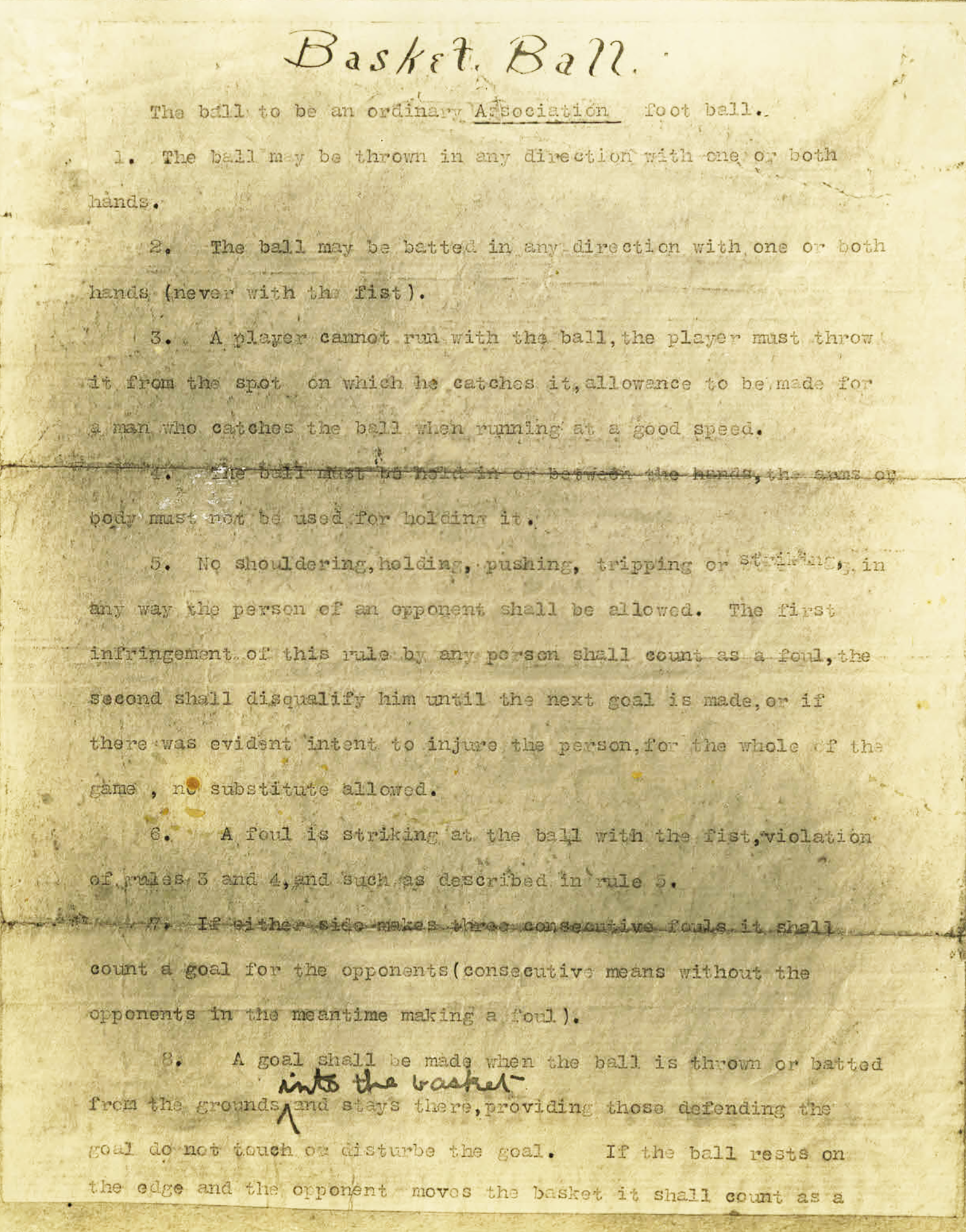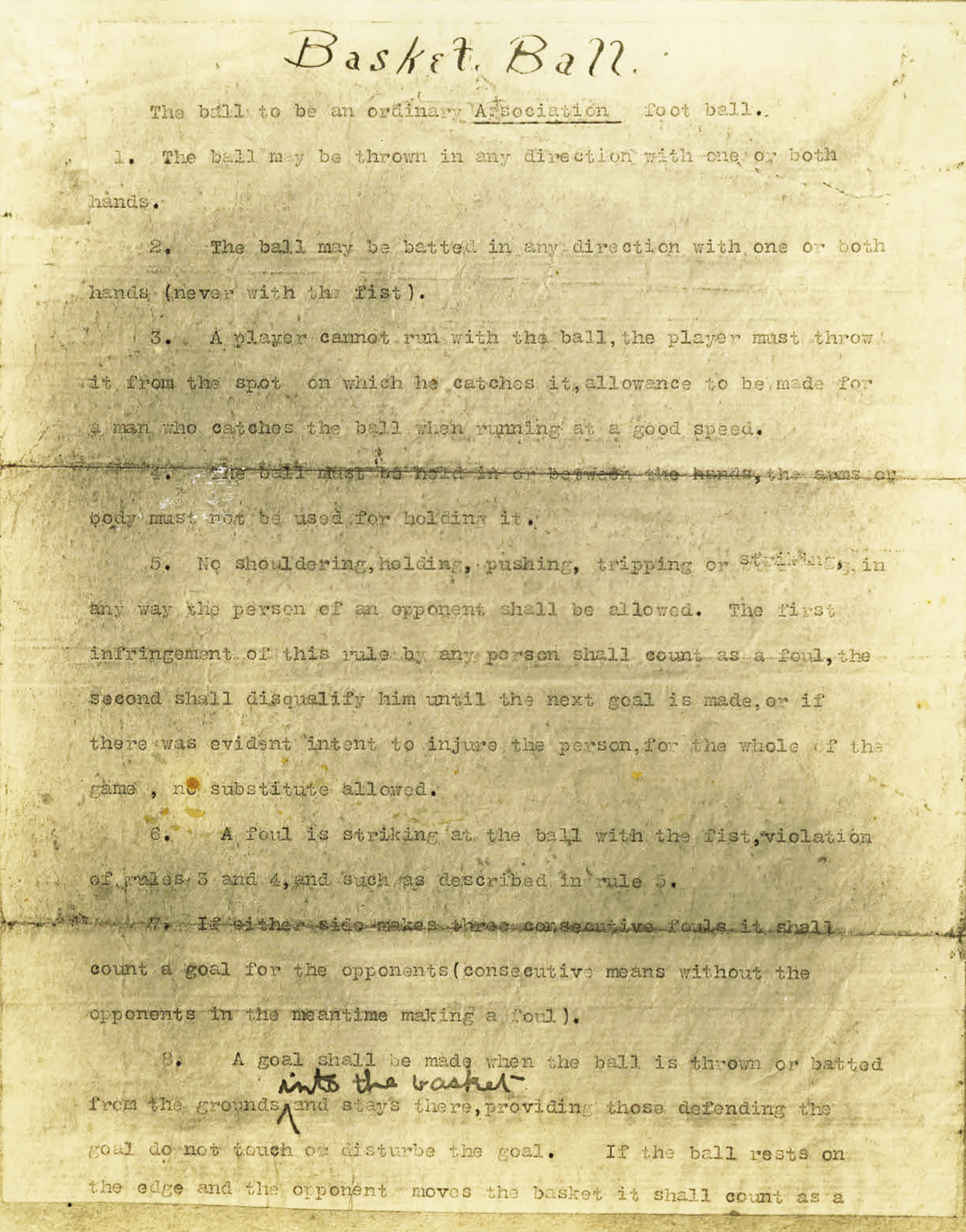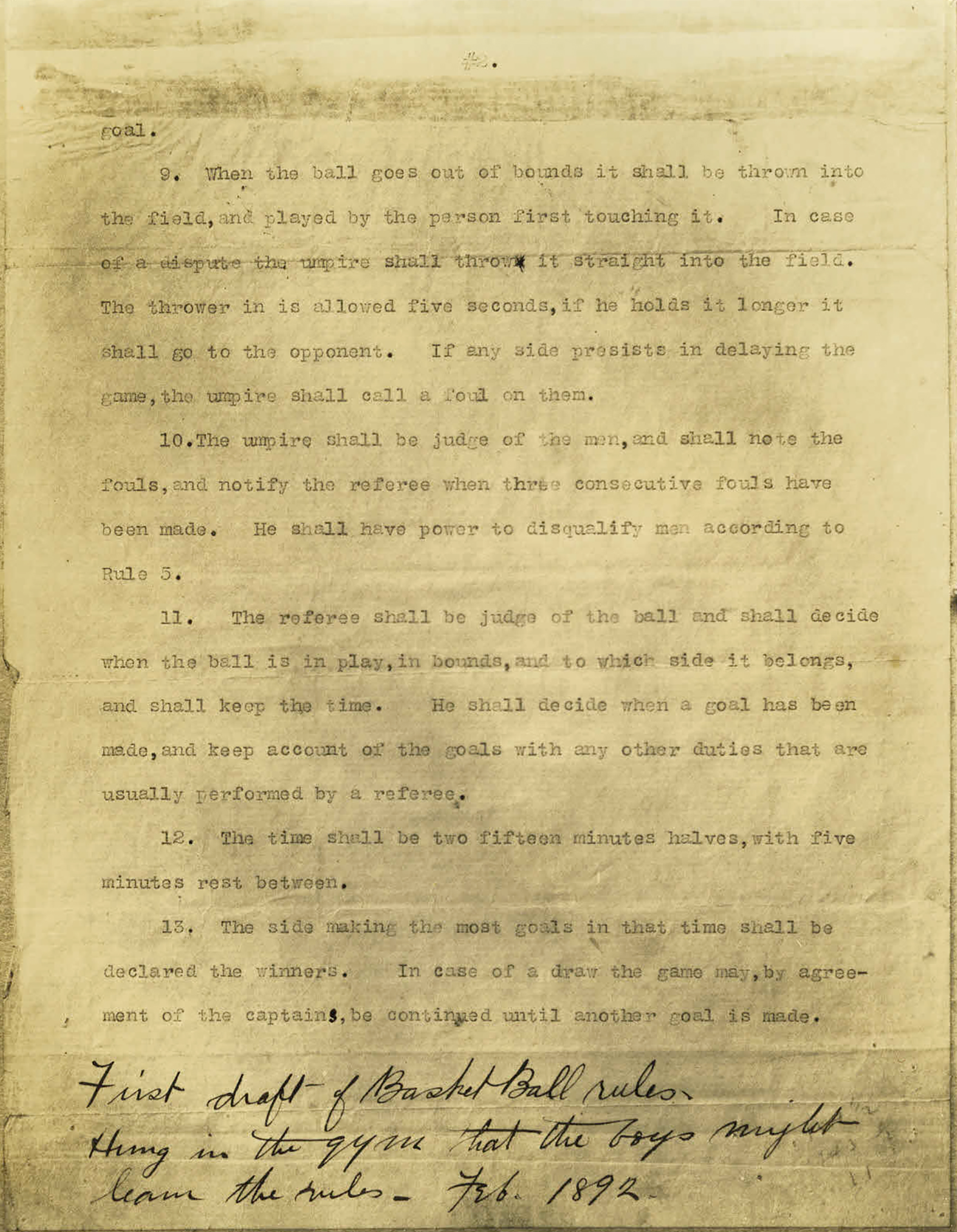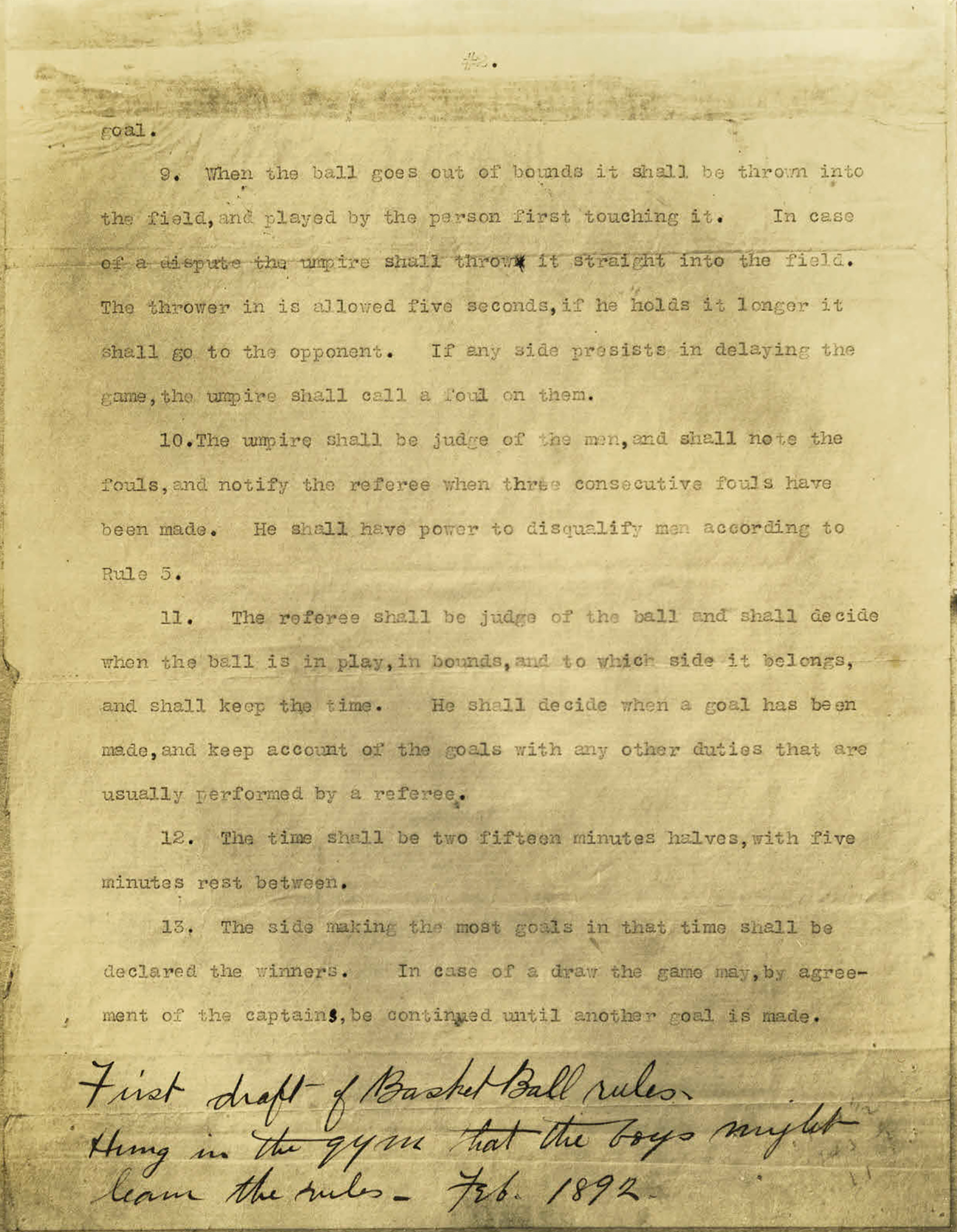The 2021-22 season is a milestone year for the game of basketball. The NBA turns 75 years old this season. Another bit of trivia: it has been 130 years since the original 13 rules of basketball were established. In the winter of 1892, a young coach created a game that youths could play indoors during a harsh winter.
Different from the game we know today, there were only 13 original rules of basketball. Originally each team consisted of 9 players. Each play started with a jump-ball. Teams advanced down the court by tossing a soccer ball across a Springfield, Massachusetts maple gym floor. A team that placed the ball in the opposing teams basket received a point.
Even though the game play was a bit different then, it quickly caught-on. In short, Dr. James Naismith, tipped off a game that would gain world-wide popularity. Let us take this opportunity to see how far “the most beautiful game” has come.
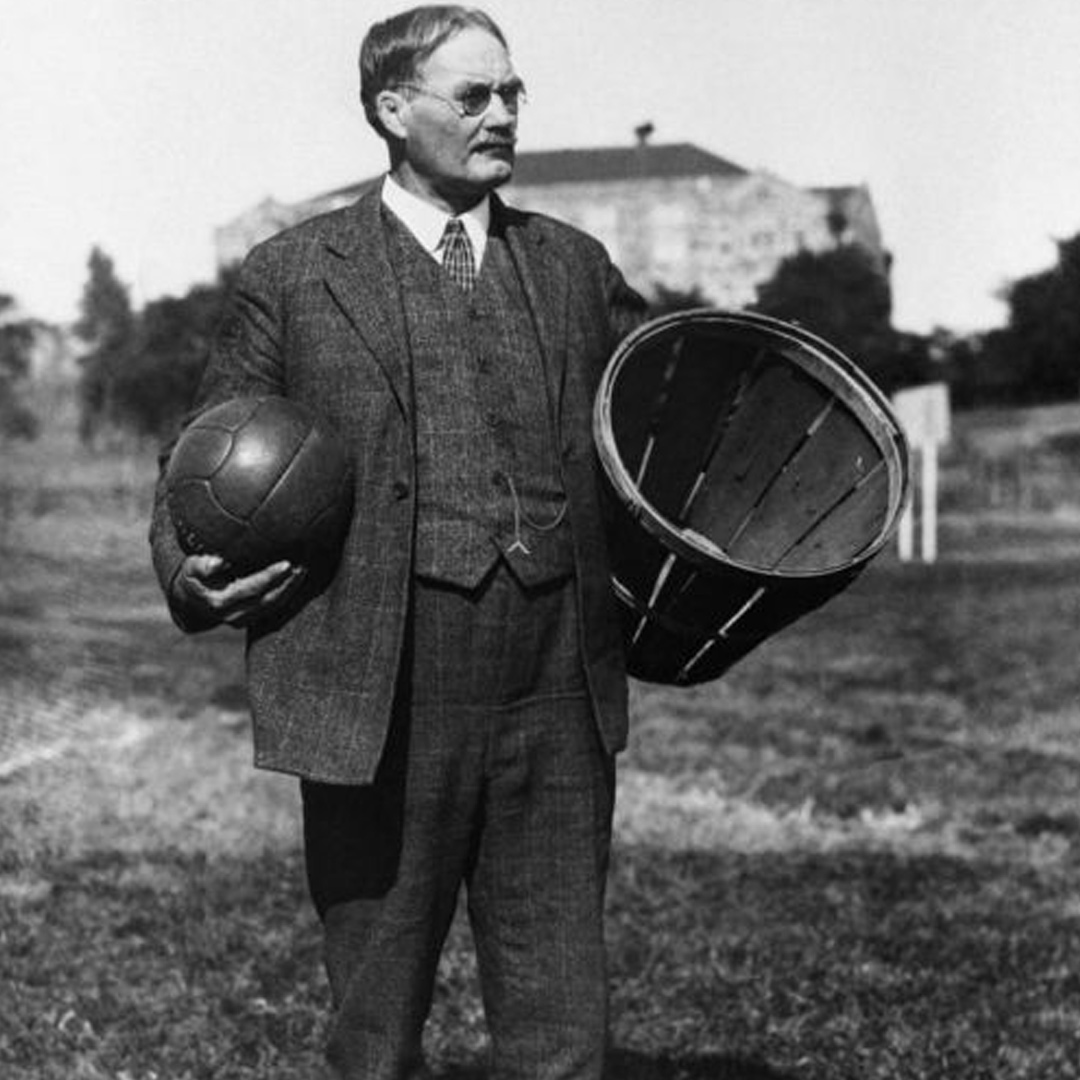

The Original Rules of Basketball
As stated above, Dr. Naismith put the 13 original rules of basketball to paper on January 15th, 1892. The game played quite differently than the game we see today. For example, 9 players moved the ball down the court differently and slower than today. Maybe, for this reason, the game time (the time for each half) was shorter. Let us take a virtual walk down memory lane and see how the game of basketball has changed.
Naismith’s original rules of basketball are featured at the DeBruce Center at the University of Kansas.
1. The ball may be thrown in any direction with one or both hands.
Simple enough, right? Whether a full court lob or a no-look-pass, players still move the ball around with their hands.
2. The ball may be batted in any direction with one or both hands (never with the fist).
Honestly, let us combine the first two rules to read “thrown or batted” in any direction. The point of these rules helps to outline the object of the game: advancing the ball down the court to score a goal in the basket. These first two rules are still in place today.
3. A player cannot run with the ball. The player must throw it from the spot on which he catches it, allowance to be made for a man who catches the ball when running at a good speed if he tries to stop.
Things get interesting with rule #3. The idea is once you get the ball your feet cannot advance. A player must stop forward progress once they receive the ball. The player must then pass the ball to a teammate. Back in 1892 dribbling the basketball did not exist. In fact, it was a university team that introduced dribbling the ball in 1897. However, a player could only bounce the ball once between passes. Advancing a ball down the court by dribbling didn't become a thing until 4 years later.
4. The ball must be held in or between the hands; the arms or body must not be used for holding it.
Alright, so technically a player cannot pose with the ball as they do in those sexy promo shoots? Correct. Players can only hold the ball with their hands. Period. This rule still exists… obviously.
5. No shouldering, holding, pushing, tripping, or striking in any way the person of an opponent shall be allowed; the first infringement of this rule by any player shall count as a foul, the second shall disqualify him until the next goal is made, or, if there was evident intent to injure the person, for the whole of the game, no substitute allowed.
Apparently, the rambunctious youths of yesterday were very rough and tumble. It has been mentioned that Naismith created basketball to engage football and rugby players inside the old and cold YMCA.
These contact fouls are the same today. Although, it is interesting to remove a player until the play. Additionally, note the point awarded to a team when the opposing team committed three consecutive fouls. This is apparently akin to today’s bonus rules. These days, they say free throws win games.
6. A foul is striking at the ball with the fist, violation of Rules 3, 4, and such as described in Rule 5.
Here Dr. Naismith is simply defining the “foul” in that time. According to H. Stevens of ESPN, Naismith worried that players would spike the ball aggressively. This rule could simply be read as no tantrums or gun show exhibits. One should probably remove the idea of "batting" from the rules too.
7. If either side makes three consecutive fouls, it shall count a goal for the opponents (consecutive means without the opponents in the meantime making a foul).
In 1911 it took four fouls to disqualify a player. This rule stood until 1945 when the rule moved to removing a player after 5 fouls. Likewise, running with the ball (traveling) changed to a violation in 1922. This simply led to forfeiting the ball to the opposing team, not a foul.
8. A goal shall be made when the ball is thrown or batted from the grounds into the basket and stays there, providing those defending the goal do not touch or disturb the goal. If the ball rests on the edges, and the opponent moves the basket, it shall count as a goal.
In the early days basketball used literal baskets. Baskets with no hole in the bottom like the modern nets we see. Since the baskets were hung, players retrieved the ball with a ladder after each score.
TLDR: No goal tending!
9. When the ball goes out of bounds, it shall be thrown into the field of play by the person first touching it. In case of a dispute, the umpire shall throw it straight into the field. The thrower-in is allowed five seconds; if he holds it longer, it shall go to the opponent. If any side persists in delaying the game, the umpire shall call a foul on that side.
This reads like the game would continue out of bounds: “the first player touching it”?! Nowadays you see players doing the hokey pokey just to get out of the way of a outwards bound ball. Today the team who last touched the ball before it goes out of bounds must forfeit the ball to the other team.
Shot clocks were eventually introduced to the game. It appears, back in the day, that players would deliberately delay the game.
10. The umpire shall be judge of the men and shall note the fouls and notify the referee when three consecutive fouls have been made. He shall have power to disqualify men according to Rule 5.
Definition of umpire
um·pire | \ ˈəm-ˌpī(-ə)r \
1: an official in a sport who rules on plays
2: one having authority to decide finally a controversy or question between parties: such as
a: one appointed to decide between arbitrators who have disagreed
b: an impartial third party chosen to arbitrate disputes arising under the terms of a labor agreement
11. The referee shall be judge of the ball and shall decide when the ball is in play, in bounds, to which side it belongs, and shall keep the time. He shall decide when a goal has been made and keep account of the goals with any other duties that are usually performed by a referee.
Definition of referee
1: to conduct (a match or game) as referee
a: to arbitrate (something, such as a legal matter) as a judge or third party
b: to review
12. The time shall be two 15-minute halves, with five minutes' rest between.
Well, this is different. Thirty minutes seems like an awfully short basketball game. Side note: there was no coaching during game play, originally. Players were only coached during halftime.
Nowadays, basketball has four 12-minute quarters. Keep in mind that the game was reset after each score. Someone had to climb a ladder to retrieve a scored ball and then the next round of play would begin again with a center court tip-off. This slowed the game down significantly. That being said, game-time probably wasn’t much longer than today’s game.
13. The side making the most goals in that time shall be declared the winner. In case of a draw, the game may, by agreement of the captains, be continued until another goal is made.
I for one would like to commend Adam Silver for not reinstating this rule. Sudden death for a tie game at the end of regulation time? Over time gives me anxiety as it is, but at least each team gets a fair chance to answer.
Evolution of the Basketball Court Layout
Not only have the original rules of basketball changed, so have the court layout. Basketball courts look a bit different from that 1892 YMCA hall in Massachusetts. To accommodate the changes of game play and skill basketball game lines and dimensions have moved. From recreational to professional courts, game lines have went through major changes. Let's look at some that affect how court layouts today.
The Backboard
Tim Duncan’s perfected bank-shot did not exist yet. And Shaq's immenseness hadn't shattered any glass. There was no backboard in the early days of basketball. Originally, baskets were hung against a balcony’s railing. Pesky spectators eventually led to the installment of wooden backboards. That's right! The original rules of basketball affected fans too. Backboards were a way to prevent the home-team fans from aiding in the ‘W’.
In 1917, the Indiana Hoosiers were the first team to implement a glass backboard. Many spectators complained that they could not see the balls action around the rim. So, let there be glass!
Additionally, the original baskets were typically up against a wall. This quickly led to some agile athletes literally climbing the walls to place the ball in the baskets. Eventually the baskets moved two feet away from the game floor walls. Nowadays the center of the basket lands at 63” (5 foot, 3 inches) from the base line.
The Jump Circle
As discussed above, the original game had team’s tip-off from the jump-circle after every basket. Today the jump circle is only used at opening tip-off and the beginning of over-time. In recent years, QHF has done away with the 2-inch circle at center court for this reason. The 12-foot diameter is still there but outlined with a ½” line so as not to obstruct the beautiful center court logos.
The Restricted Arc
In today’s basketball, players move with such speed that it’s easy to bowl an opposing player over. In fact, this happens a lot. This causes a foul on the striking team. The restricted area’s purpose is to stop defending players from standing under the basket. Defender hope to draw a foul when the offense is making their way for a lay-up.
Professional basketball added the restricted area arc in 1997. The restricted area is in “the paint” just underneath the basket. The NBA restricted area is a 4-toot half circle underneath the basket. NCAA regulations have the restricted area at a 3-foot radius.
The Key
The key, or “paint”, is the rectangular area underneath the free throw line. This is the area where players alternately line up during free throws. The term “key” refers to the originally 6-foot-wide area underneath the 12-foot diameter free throw circle. This looked like a key-hole from a birds-eye view.
Due to the narrow 6-foot-wide key it was easy for a large center player to dominate beneath the goal. For this reason the key-area moved to 12 feet wide starting in the 1951–52 NBA season. Professional "bigs" remained dominate and forced the NBA to widen the key again in the '64-'65 NBA season.
Today the NBA's key area is 16 ft. wide. NCAA and Highschool basketball markings still have a 12 foot key area.
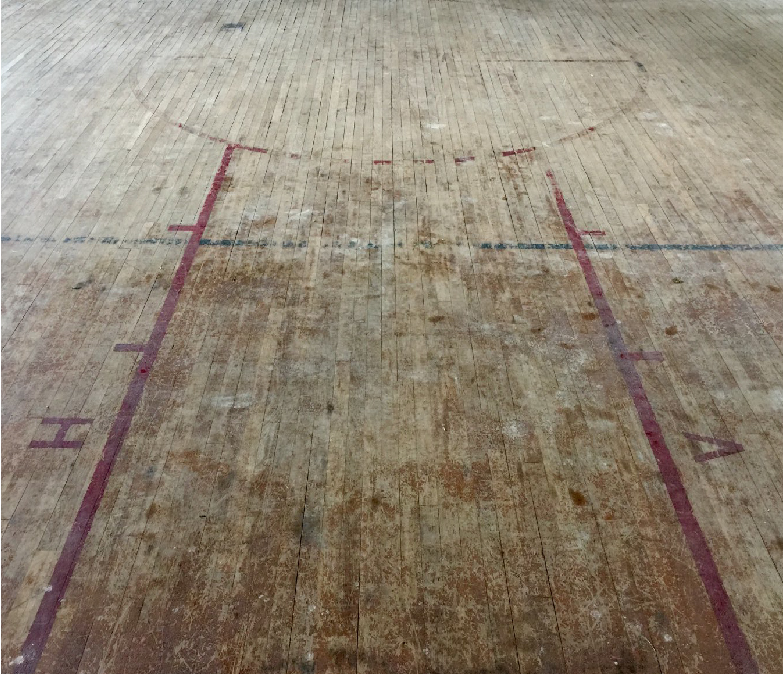

Example of original "key" dimensions in an old Millersview, TX gym. Photo courtesy of Backroadsbasketball.com
International 3pt Line for NCAA M&W Basketball
In the summer of 2021, the NCAA changed women’s basketball line to match men’s and international basketball regulation: 22 feet, 1 ¾ inches. This is because skill level has evolved and changed the game of basketball. All three collegiate divisions saw astronomical increase in field goal attempts beyond “the arc”. The pro’s at QHF have since been busy removing the former women’s three-point lines.
The Coaching Box
There were no coaches in the original iteration of basketball. However, coaches were eventually allowed. Traditionally, both team benches sit on the same side of the court, flanking the scoring table. However, coaches couldn’t just run up and down the court. Could you imagine how much more smack talk referees would have to endure?
In 2017, the NCAA extended the coaches box 10 feet. The now sizable 28-feet from the baseline does allow for better communication between coaches and players. These are the 3-foot lines typically seen on the bench-side of the game floor.

